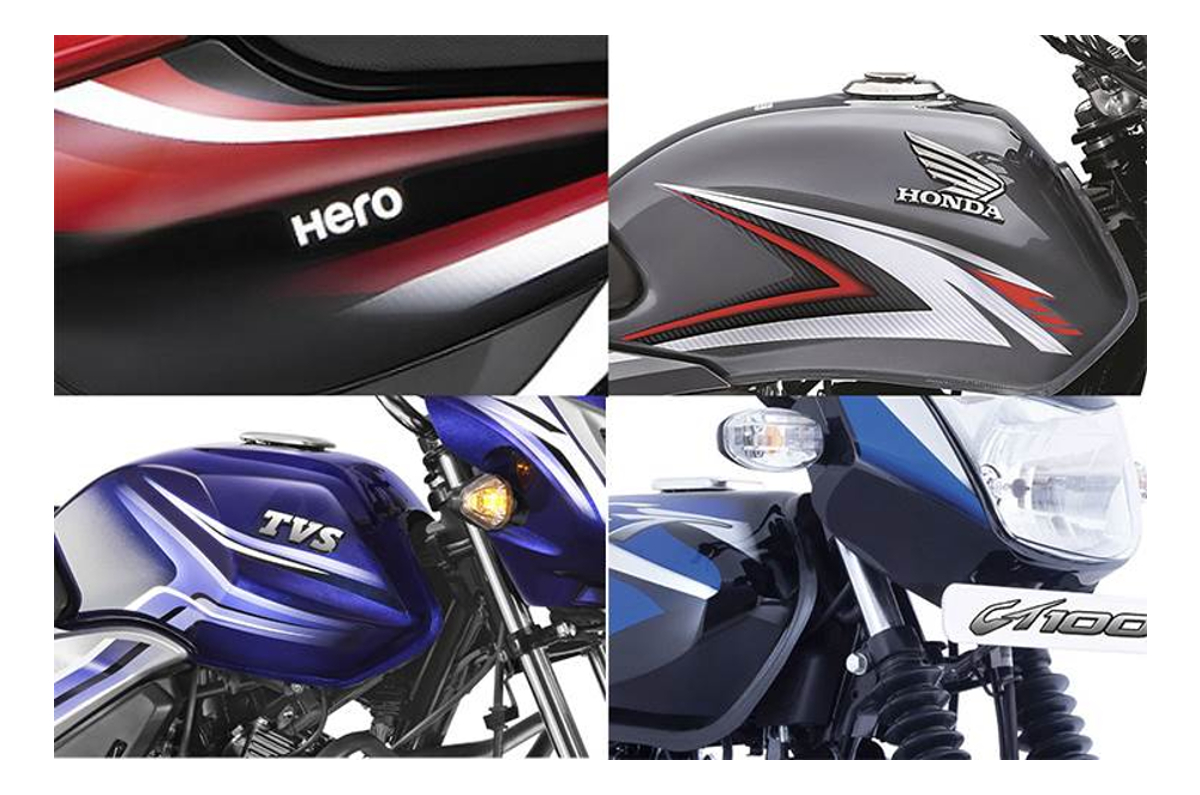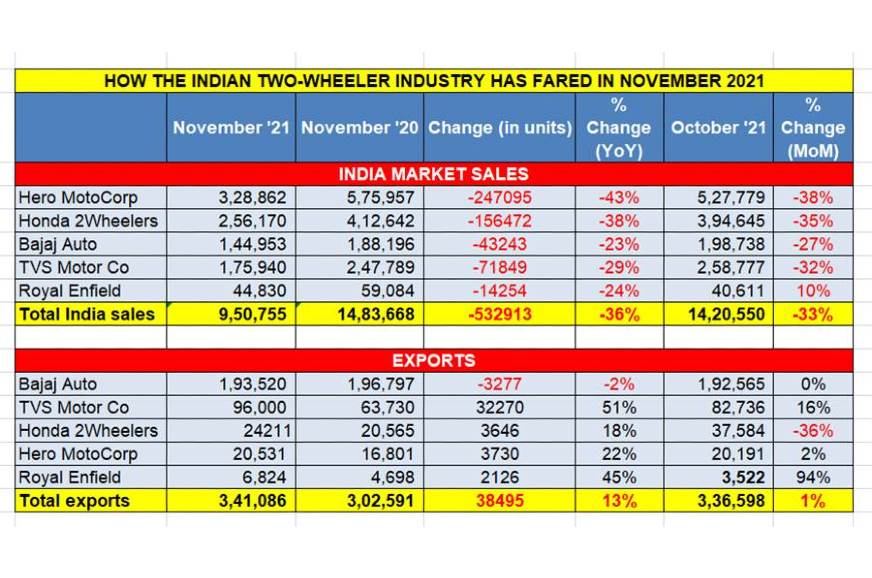
On December 1, four hours after it released its wholesales numbers for November, Bajaj Auto, which is currently ranked fourth in India, in terms of domestic market share, announced that it had become the No. 1 motorcycle manufacturer in November – domestic and export numbers (3,38,000 units) combined. Hero MotoCorp, which is ranked first in domestic motorcycle wholesale for November, sold 3,29,185 units.
-
Month-on-month sales down by 33 percent
-
Top four companies account for major share
-
Sales hurt by lack of demand for commuter bikes
While this is statistically true, what the sales numbers released by five leading two-wheeler OEMs, including the Top 4, reveal is that their cumulative sales last month are down sizeably – at 9,50,755 units – combined sales of Hero MotoCorp, Honda Motorcycle & Scooter India, TVS Motor Co, Bajaj Auto and Royal Enfield are down 36 percent year on year (YoY). Extend the math to their sales in the previous month, and the news is not good – a 33 percent reduction in sales month-on-month (MoM) (14,20,550 units).
This is a worrying situation for the two-wheeler industry because the Top 4 players by market share (as per April-October data) account for an overwhelming 88.62 percent of the entire industry – Hero MotoCorp (35.17 percent), HMSI (25.95 percent). TVS (14.73 percent) and Bajaj Auto (12.77 percent) – with the remaining seven players having a single-digit share.
Given that October numbers themselves were a 25 percent decline over last year's sales of 20,53,814 units, November’s MoM decline will surely have captains of the two-wheeler industry worried and looking for market-friendly solutions.
A clue and an advance warning to the poor sales in November had come in the third week of October, when dealer body FADA had announced retail sales numbers for the month. At the time, Vinkesh Gulati, president of FADA, had said, “The two-wheeler category continues to face the brunt of low sales with the entry-level category being the biggest spoilsport. The rural distress in retail, coupled with frequent price hikes, triple-digit fuel prices and customers conserving funds for healthcare emergencies kept the demand low. In fact, walk-ins and customer inquiries were also ultra-lean during the festive period.”
FADA had said that two-wheeler inventory levels had reached 40-45 days and are a cause of great concern for dealers. It called upon OEMs to work towards bringing down the inventory to 21 days while also urging them to come forward with attractive customer schemes to revive rural demand as well as the entry-level category.
Clearly, the lack of sustained demand in the entry level 100-110cc commuter motorcycle category, which provides the bulk of the sales, is hurting OEM and overall industry numbers. Poor sales in the entry-level motorcycle market are a result of slackened demand from rural India, the biggest consumer of fuel-efficient commuter bikes. What’s more, with urban India still to come to work in offices, potential buyers have deferred their purchase decisions. Adding to the vexing issue of slackened sales is that retail finance companies are a bit more cautious when it comes to disbursing funds for the entry-level segment as compared to executive or higher-segment motorcycles.

Also see:
Two-wheeler sales drop by 26 percent in October
https://ift.tt/3dpYi74



